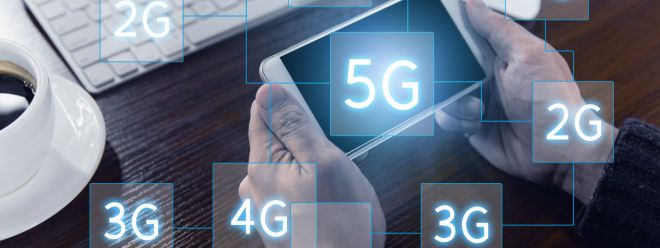Prospects and challenges of 5G messaging development

Prospects and challenges of 5G messaging development
With the rapid development and popularization of 5G technology, 5G messages are gradually becoming a new focus in the global communications field.

The development of 5G messaging shows a trend of scale and industrialization
More than three years have passed since the three major domestic operators jointly released a 5G news white paper in April 2020. In the past three years or so, 5G news has gradually come into public view with the rapid development of 5G technology and has become an emerging application that has attracted widespread attention.
From a technical perspective, the development of 5G messaging benefits from the rapid popularization of 5G networks and the continuous advancement of technology. The characteristics of 5G network such as high speed, low latency and big data transmission provide strong support for 5G messages, making message delivery more rapid, real-time and reliable. In terms of platform construction, the three major domestic operators have built 30 5G messaging nodes in 15 regions, forming a 5G messaging network with extensive coverage. In addition, operators are also actively cooperating with various industries and enterprises to jointly promote the development of 5G messaging.
From the perspective of application scenarios, the application scenarios of 5G messaging are already very wide, meeting the needs of different industries and users. According to statistics, domestic operators have connected to hundreds of 5G messaging CSPs, opened more than 100,000 Chatbots, and sent nearly 20 billion 5G messages every year. Chatbot has achieved diversified applications in many fields such as government affairs, finance, culture and tourism, public services, life services, media, medical care, and e-commerce. For example, government agencies use 5G messages to provide various public services to the public, such as government information inquiries, public safety warnings, etc.; enterprises use 5G messages to achieve internal communication and collaborative work, improving work efficiency and communication effects; social and entertainment applications use 5G messages to It brings users a new social experience, such as real-time interaction, short video sharing, etc., making social interaction more convenient and interesting.
In addition, with the continuous improvement of terminal support, the popularity and usage rate of 5G messages are also gradually increasing. According to the 5G Messaging Working Group report, as of May 2023, 309 mobile phone models support the 5G Messaging UP2.4 standard, including 264 models from China Mobile, 23 models from China Unicom, and 22 models from China Telecom. The continuous growth of this number means that more and more users can enjoy the convenience and efficiency brought by 5G messaging.
Challenges and suggestions for 5G messaging development
Currently, the development of 5G messaging is showing a trend of scale and industrialization. However, although 5G messaging has good momentum of development, it also faces some challenges during its development. Although 5G messaging technology has made some progress, it still needs further improvement and maturity. The 5G messaging industry chain involves multiple links, including equipment manufacturers, operators, platform developers, application developers, etc. Collaboration needs to be strengthened to promote the healthy development of the entire industry chain.
At the same time, traditional text messages still play an irreplaceable role in certain fields and specific scenarios. How to balance the relationship between traditional text messages and 5G messages is one of the current problems that need to be solved. Secondly, there are currently not enough terminals that support 5G messages, and users’ awareness of 5G messages is relatively low. Therefore, it is necessary to increase publicity efforts to improve users' awareness and usage of 5G messages, and at the same time, it is necessary to further promote terminal manufacturers' support for 5G messages.
In addition, 5G messages still face some security and privacy protection issues. It is necessary to strengthen the construction of technical and management methods to protect the security and privacy rights of user information. The business model of 5G messaging is not yet clear, and how to realize commercial value still requires further exploration and practice. It is necessary to carry out in-depth market research and business analysis to explore the business model and business value that are consistent with the characteristics of 5G messaging.
Recently, at the award ceremony of the 5G Message Special Competition of the 6th "Blooming Cup" 5G Application Contest, Liang Wei, a third-level researcher from the Information and Communications Development Department of the Ministry of Industry and Information Technology, put forward three suggestions for the development of 5G messages:
First, in terms of technology, it is necessary to further promote the rapid iteration of relevant standards, tap industry needs, and form a relatively unified cross-enterprise and cross-field collaboration template to meet the differentiated needs of various industries;
Second, in terms of models, market mechanisms must be fully respected, and all parties in the industry chain must make long-term plans, dare to innovate in models, and cooperate for win-win results in development;
Third, in terms of services, we must take carrier-grade services as the purpose, improve user experience as the ultimate goal, fully draw on the demand-oriented development model of the Internet industry, and promote 5G messaging to become a new bridge between the government, enterprises and the public.
Conclusion
With the continuous evolution and application of 5G technology, the development prospects of 5G messaging are broad. In the future, 5G messaging will be further integrated with technologies such as artificial intelligence and the Internet of Things to achieve a wider range of business scenario applications. At the same time, 5G messaging will also promote changes in the communications industry, drive the development of more industries, and bring more convenience to people’s lives. We believe that in the near future, 5G messaging will become an important development direction in the communications field and make important contributions to the development and progress of human society.